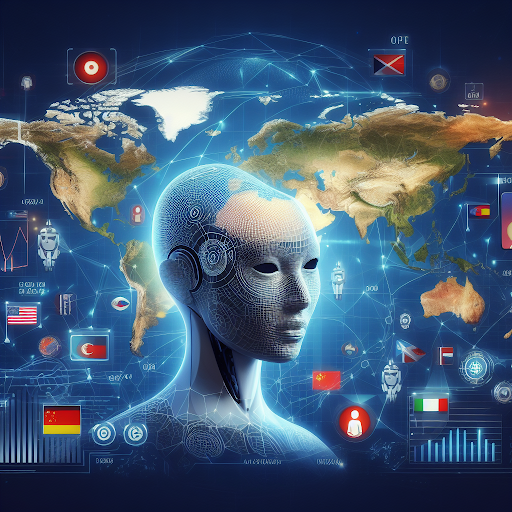Code Red or Peace Protocol? The Delicate Dance of AI and Diplomacy in a Fragmented World
- Vikhram S

- Jan 20, 2024
- 2 min read
Updated: Feb 7, 2024

The global stage is already a complex web of alliances, rivalries, and shifting sands. Now, a new player enters the arena: Artificial Intelligence. With its potential to reshape everything from military strategy to economic power, AI presents both tremendous opportunities and chilling risks for the art of diplomacy. But how do we navigate this uncharted territory? Can AI be a bridge towards peaceful resolutions, or is it destined to fuel the flames of conflict?
Opportunity Knocks:
Imagine a world where AI analyzes vast datasets, predicting potential flashpoints before they erupt. Imagine real-time translation facilitating nuanced, cross-cultural understanding. Imagine AI tools crafting win-win solutions to resource depletion or climate change. AI has the potential to become a potent weapon for peace, fostering dialogue, mitigating misunderstandings, and identifying common ground.
But Danger Dances Close:
The flip side of this coin gleams with a cold, metallic chill. The same technology that predicts peace can also predict wargames. Advanced AI-powered weaponry raises the specter of autonomous arms races, while misinformation campaigns weaponized by AI threaten to fracture trust and sow discord. In the wrong hands, AI could become the ultimate diplomatic doomsday device.
Treading the Tightrope:
So, how do we harness the power of AI for good, while mitigating its risks? The answer lies in a delicate dance of ethics, transparency, and international cooperation. Here are a few key steps:
Ethical Frameworks: We need a global consensus on ethical guidelines for AI development and deployment in diplomacy. This means ensuring unbiased algorithms, human oversight, and accountability for AI-driven decisions.
Transparency Tango: Trust is the lifeblood of diplomacy. We need complete transparency about how AI is being used in international relations, fostering dialogue and collaboration to avoid misunderstandings and misuse.
Global Governance Gala: AI transcends borders, demanding international cooperation to manage its impact on diplomacy. Multilateral institutions, NGOs, and individual nations must join forces to establish governance frameworks and prevent an AI arms race.
The future of diplomacy in the age of AI is not preordained. It is a story we write together, page by pixel, code by code. The choice is ours – will AI be the Bard of a new era of peace, or the harbinger of digital dissonance? Let us rise to the challenge, hand in hand, and ensure that AI joins the diplomatic waltz, not the doomsday tango.
Remember, the dance floor of diplomacy is no place for algorithms alone. The human touch remains the essential ingredient, guiding AI, not the other way around. Let us wield this new tool with wisdom and restraint, for the stakes have never been higher.
So, dear reader, what do you think? Is AI a Code Red for diplomacy, or can we craft a Peace Protocol for the digital age? Share your thoughts in the comments below!





Comments